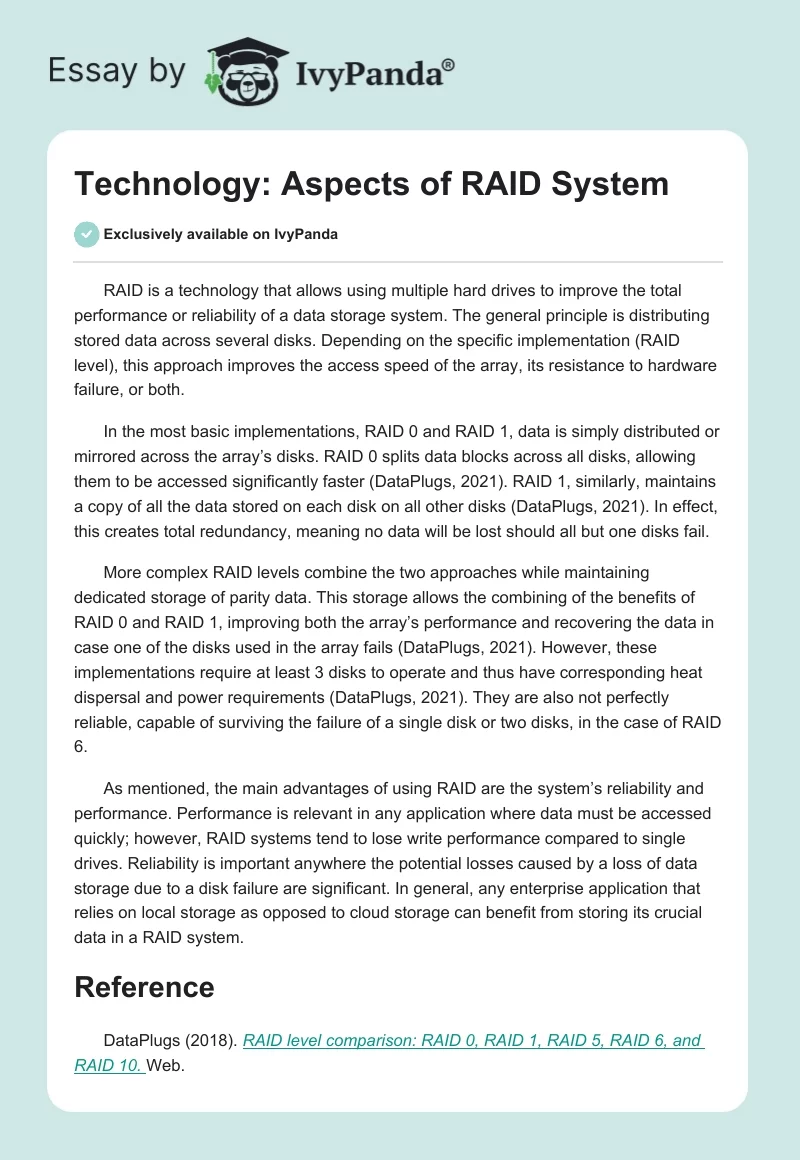RAID is a technology that allows using multiple hard drives to improve the total performance or reliability of a data storage system. The general principle is distributing stored data across several disks. Depending on the specific implementation (RAID level), this approach improves the access speed of the array, its resistance to hardware failure, or both.
In the most basic implementations, RAID 0 and RAID 1, data is simply distributed or mirrored across the array’s disks. RAID 0 splits data blocks across all disks, allowing them to be accessed significantly faster (DataPlugs, 2021). RAID 1, similarly, maintains a copy of all the data stored on each disk on all other disks (DataPlugs, 2021). In effect, this creates total redundancy, meaning no data will be lost should all but one disks fail.
More complex RAID levels combine the two approaches while maintaining dedicated storage of parity data. This storage allows the combining of the benefits of RAID 0 and RAID 1, improving both the array’s performance and recovering the data in case one of the disks used in the array fails (DataPlugs, 2021). However, these implementations require at least 3 disks to operate and thus have corresponding heat dispersal and power requirements (DataPlugs, 2021). They are also not perfectly reliable, capable of surviving the failure of a single disk or two disks, in the case of RAID 6.
As mentioned, the main advantages of using RAID are the system’s reliability and performance. Performance is relevant in any application where data must be accessed quickly; however, RAID systems tend to lose write performance compared to single drives. Reliability is important anywhere the potential losses caused by a loss of data storage due to a disk failure are significant. In general, any enterprise application that relies on local storage as opposed to cloud storage can benefit from storing its crucial data in a RAID system.
Reference
DataPlugs (2018). RAID level comparison: RAID 0, RAID 1, RAID 5, RAID 6, and RAID 10.Web.

